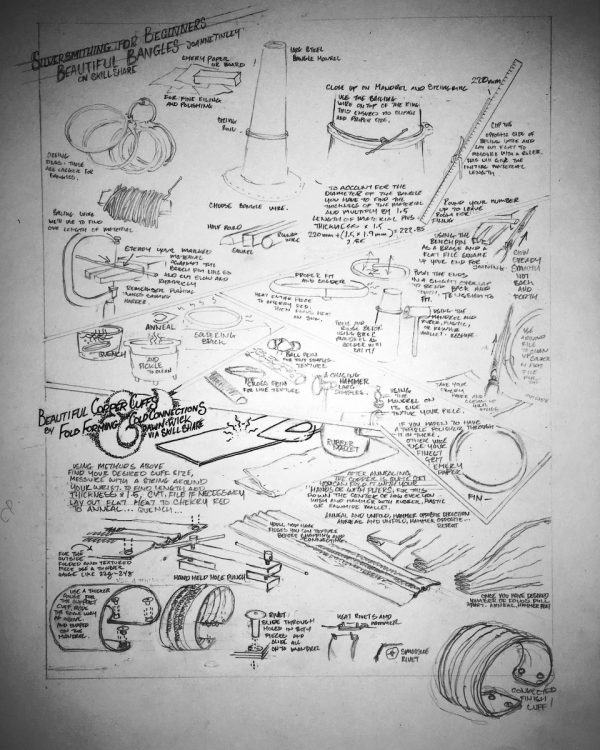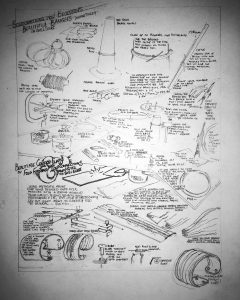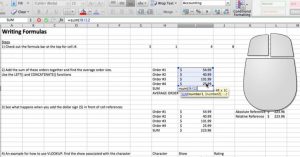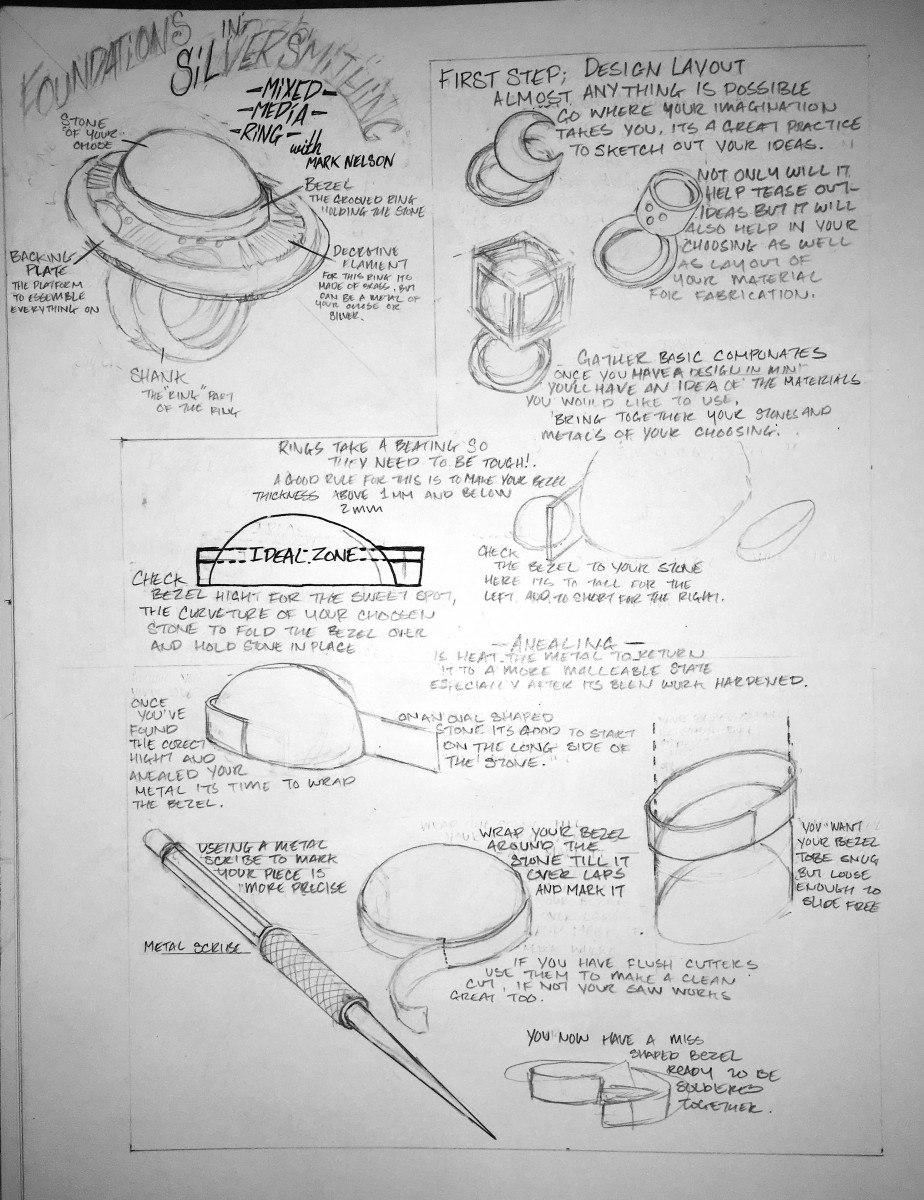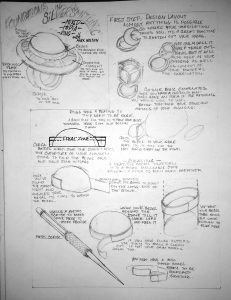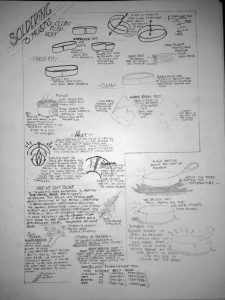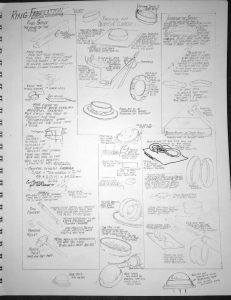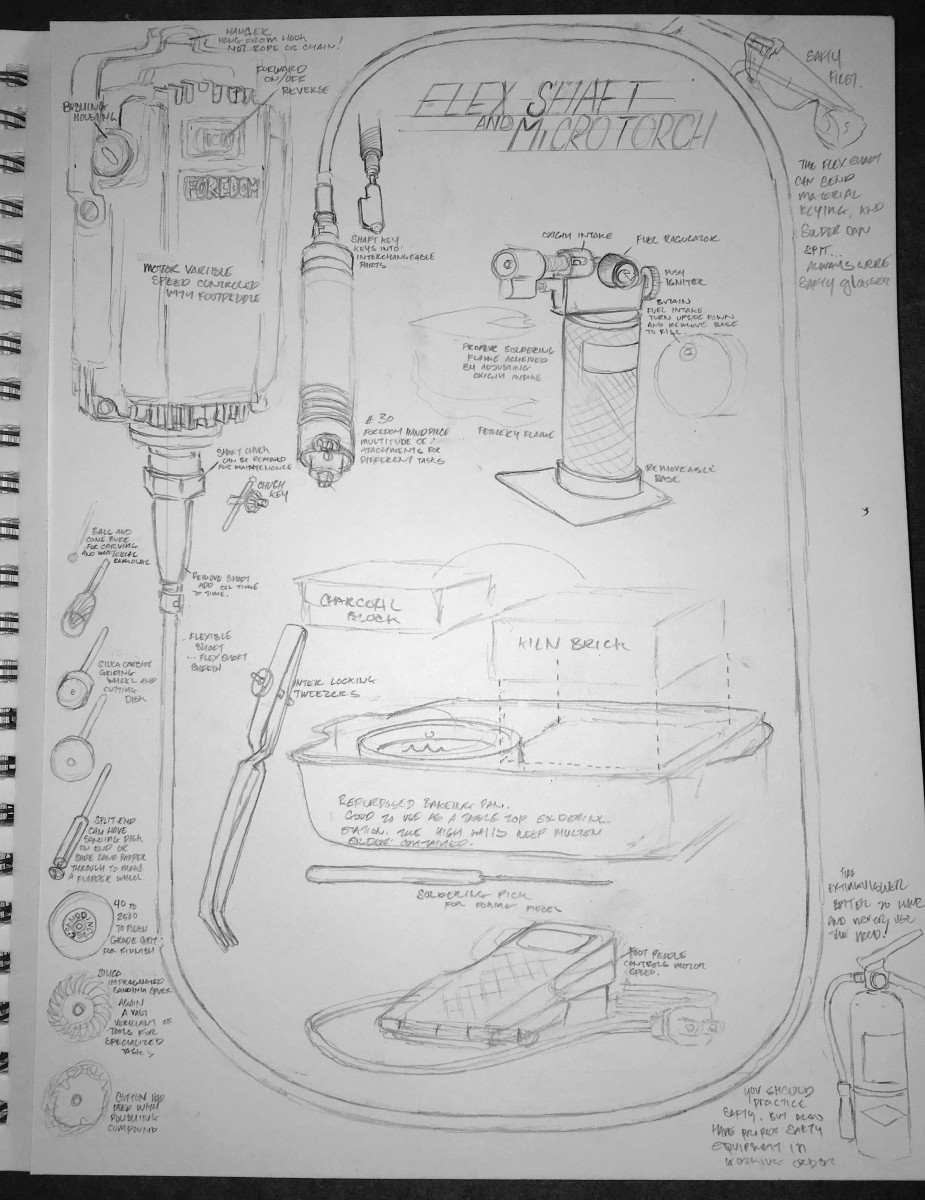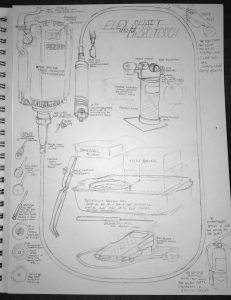Alignment: Fundamental principle of design. Things that are aligned are percieved to be more related than things that aren’t aligned. Elements that align with reading styles strongly influence how you percieve what your reading (meaning, if a paper reads left to right for example or top down). Example: poor designed ballots can lead to errors in voting. Elements in design should align with at least one other element, so that compositions are coherent and organized
Feature creep: an expansion or addition of new product features beyond original design. Designers or marketers that add features without really understanding the customers need. More is not always better, it can overwhelm and confuse consumers. Editing original design to include a feature can be detrimental
Desire lines: Traces of use that indicate perferred methods of interaction (wear and tear on objects, fields, walkways, keyboards, phones, etc). Find how out how people actually use something, then use your findings as a blueprint for design. Designers dont always know best. User-centered design philosophy: develop an understanding for how people interact with a product and let this guide the design. (Marketers would be very helpful with this)
Iteration: Reapeating a set of design and development, building upon the last draft of each until you succeed. Focus on getting through multiple prototypes quickly to get to the best end product (fail fast, fail often)
Hicks law: the time to make a decision increases with the amount of options, too many options means taking more time to respond. KEEP IT SIMPLE!
Left digit effect: consumers respond more emotionally to the left digit (as in, theres a difference to the customer response between 29.99 and 30.00 even though they are essentially the same). Prices ending in .99 began to appear in newspapers in the 1800s, around the time the register was invented. A price that ends in .99 required cashiers to open the register and make change, and more visually accounting for the transaction. But now its a marketing tactic to subconsciously make people believe the price is less. This could have to do with the fact we read left to right. Though, we also tend to believe the quality of a product decreases if it is not a whole number, and subconsciously view the unrounded price as meaning we are being decieved.
Root cause analysis: a way of understanding problems in relation to their causes. Its a challenge in design to develop a deep understanding of problems, not just see a single cause
Sunk cost effect: tendency to continue investing because of previous investments in the project, even when the payout wont be worthwhile
Selection Bias: people are pattern oriented. Selection bias is a distortion of statistical evidence, where the evidence is skewed because of lack of randomization, that distorts the conclusions as well. You have to collect data from every source, or use data from random sources.
Ikea effect: the act of assembling a thing increases the perceived value of the object to the purchaser – example given, boxed cake’s sales shot up after changing the formula from “just add water” to “add eggs, and make frosting with decorations!” People want low effort and a high perceived level of contribution
Red effects: a set of cognitive effects that happen when exposed to the color red. distinguishing red from other colors (after black and white) is our oldest color-recognition ability. Red is noted by the lecturor as the “Color of blood and fire”, the color that makes women more attractive to men, wearing red can lead to a competitive advantage in sports, shows dominance, example: “red power tie”, impairs problem solving and creativity, Designers use red to increase attractiveness (such as red lipstick, red sports car)
Black effects: a set of cognitive effects that happen when exposed to the color black. white and black were the first hues humans could see, associated with evil: theres even difficulty getting black dogs and cats adopted because people perceive them with hesitation, nightime, black glossy products are seen as timeless and high value, black is associated with dominance and authority.
White effects: a set of cognitive effects that happen when exposed to the color white. White is seen as moral and good, prophets are depicted in white and light, daytime, believed to show honesty and fairness, white glossy products are seen as timeless and classy
Weakest link: the use of elements in a product designed to fail to protect the most important elements in the design in case of failure, by disconnecting systems when they fail, or containing damage after systems fail
Supernormal stimuli: variation of a familiar stimulus that elicits a response stronger than the original stimulus. instinctive responses can be exaggerated by manipulating the trigger stimuli. Exaggerated features of superheros or barbies, high concentration of sugar in candy, younger people are more susceptible to this
Performance load: the mental and physical effort to complete a task, cognitive (mental effort) or kinematic (physical effort). When performance load is high, errors and time spent on task increase. For entertainment products, it should be in the center, where its not too complex to not understand for most people, but not simplistic enough that it is boring. Increased automation helps bring down performance load.
Crowd intelligence: an emergent intelligence arising from collaboration of many peoples conclusions. The average estimate of a crowd is more accurate than all of the seperate individual estimates. Works best on simple problems with clear answers, not for creative problems.
Forgiveness: one of the most important principles in design, designs should help people avoid errors and protect them if they do fail, prevent harmful conditions, warn people of harmful conditions that are ahead, request confirmation for deletion or override, provide a fail response from the product.
Aesthetic usability effect: beautiful objects are percieved to be easier to use than unattractive objects, even if they are the same. Perceptions of products influence how people will continue to regard objects, like the marketing class I took before talked about, if you are aiming to influence change and a movement, you have to make them think about all products differently by their exposure to your project, one easy way to do this is to make them attractive and simply functional. The lecturor quoted “form should follow function” – Louis H Sullivan, father of modernist architecture. Generally, making things work well before making things beautiful is wise. Aesthetic usability effect is the exception to this.
80/20 rule: pareto principle – in any large complex system, a large percentage of the effects are cause by a small percentage of variables (often, 80/20). Focusing on the 20% means a high impact for a low cost.
Baby-face bias: tendency to see things with baby like features as having cuteness and personality characteristics like gentle nature, helpless, and honest, applying to all anthropomorphic things (example, disney princesses, vw bug cars, etc). If it benefits a product to be the opposite, they will have sharper edges (example, sports cars, superman, etc). Bias is stronger in women and children. Would benefit a product like companion robots or automated household devices.
Cognitive dissonance: a state of mental conflict that results from incompatible attitudes, thoughts or beliefs, that makes people want a resolution to the tension (to fix the conflict). Example: create cognitive dissonance in a consumer, making the consumer ask themselves whether what the advertiser states applies to them, which often results in the person subconsciously agreeing with the ad. Like with any product advertised as a “must buy” product if you love someone, the person will ask themselves, why havent I bought whoever this product if I love them? In which case they often do.
Gloss bias: general human preference for glossy rather than matte objects. why do we like glossy objects? Example given, apple stopped making matte screens despite their superiority in favor of glossy screens only on their laptops. Why they did this as a company that states its revolutionary and different from other tech manufactorers is simply that the glossy display outsold the matte ones in store. Bias is weaker in people with experience with a variety of finishes, a well-read or experienced consumer will be less likely to buy glossy finished items than the general person.
Golden ratio: a ratio within the elements of a form, such as height to width, which approximates 1.618. Inherently aesthetic proportion found in nature and the human body. Now the standard for paperbacks, great structures often have this ratio. Only found to be beneficially preferred in linear or rectangular object design.
MAFA effect: Most Average Facial Appearance effect is when people find the most average facial appearance of a population more attractive than faces that deviate from the average
Archetypes: universal patterns of form, social role, and story that have appeal or influence. Archetypal forms include horns, snakes, provocative forms. Archetypical social roles include hero, rebel, trickster, lord. Archetypal stories include: quest, conquer, voyage, tragedy, romance. More effective with mass market audiences instead of niche audiences. Good for communicating cross culturally, increase appeal, or communicate on an emotional basis.
Face-ism ratio: the ratio of face to body in an image calculated by dividing the distance from the top of the head to the bottom of the chin by the distance from the top of the head to the lowest visible point of the body. Images depicting a person with a high face-ism ratio (where the face is more prominent in relation to the body depicted) focus people’s attention on the persons inner attributes like personality, instead of the persons physical attributes, and with a low face-ism ratio, when the body is more prominent, people pay more attention to the sexual or ornamental features of the person.
Flow: a state of problem immersion so complete that awareness of reality is lost. Balances task difficulty and skill level needed at equally increasing volumes. Person continues to be challenged at their skill level, creating clear goals that build upon time, and positive feedback.
Freeze-flight-fight-forfeit: when people are exposed to stressful situations, they respond by FFFF. When threatened, people instinctively freeze to gather information and understand the scenario, next is to flee in order to escape, when impossible the response is to fight, and lastly is to forfeit and surrender. It is important for design systems to understand the stages of stress response. Simplifying tools and controls helps with the tools being operativeable by people in stressful situations, like how emergency exits are designed (simple use, visibility, etc)
Legibility: something as simple as the size of typeface can be the difference between a product being workable or not. Legibility is the visual clarity of text based on size, typeface, contrast, spacing etc
MAYA: most advanced yet acceptable – “useful for determining the most commercially viable aesthetic for a design. Aesthetic appeal is a balancing act between familiarity and novelty…the most advanced form of a design that is still recognizable as a member of its product category will be the most aesthetically pleasing to general audiences”. Consider it when designing for mass market scenarios. Release innovations slowly and gradually, not all at once in one product.
Mental models: mental simulation of how things work, how you expect something to work based on your experience with similar things. Difficult to change. System model is how things work. Interaction models are how to use or interact with something. Engineers versus average consumer have totally different concepts of how an object works. There is not much understanding between both these groups, but designers can be the go-between of both groups. Engineers and designers should use their products, and observe users using these products, to not only have system model understanding but also interaction model understanding.
Shaping: breaking down a complex behavior into a series of simple behaviors which are trained one by one until the complex behavior is achievable. The complexity of the behavior continues to be raised to achieve rewards. One odd thing is superstitious behaviors: irrelevant behaviors accidentally reinforced during training, like when people unexpectedly score well on a test when wearing a certain shirt then wear their lucky shirt every time they have an important test.
Storytelling: Storytelling is evoking emotions or understanding through events presented to a consumer, particularly useful when its interesting, relevant, and makes people feel something. A great marketing strategy is that people dont buy objects, they buy objects with stories.
Waist-to-hip ratio: example, the “contour bottle” used by coca-cola beginning in the early 1900’s. Products that have similar ratios to the “ideal” body ratio of waist to hip in people (women 0.67-0.80, men 0.85-0.95). Many products use this shape and ratio for products. Objects can be feminized by making their “waist to hip” ratios closer to the female ratio, or masculized by making their “waist to hip” ratio closer to the male ratio.
Zeigarnik effect: tendency to experience intrustive or interruptive thoughts about a task that is interrupted or incomplete (something I wrote about in my previous book review: the riskiness of leaving a project half-done and procrastinate by doing another project that will then be less skillfully executed). Your mind seeks closure and seeing items completed, so your mind continues to focus on tasks still minimized on your mind’s desktop, they are still in your subconscious, taking energy. This can help you remember material better, such as if you take a break doing something unrelated, but feel driven to get back to the task due to the Zeigarnik effect!
Affordances: the characteristics of an object that influences its function or use (like a door that opens and closes in an obvious way) an affordance that doesnt work is when the form of the object doesnt align with how they are supposed to be used, like if a door had a doorknob but its actually a push door). Example given by lecturor is large walls afford graffitti, large walls that are already painted with images or covered with plants does not afford graffitti.
Citation:
